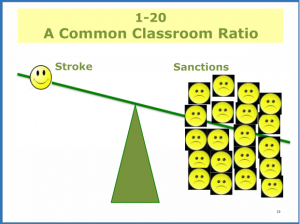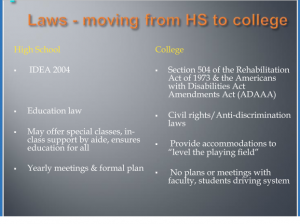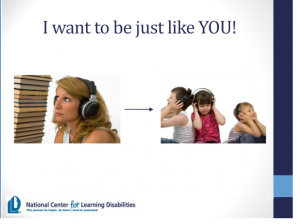On December 5th 2014,
Learning Ally held the first ever online conference meant specifically for parents of children who have dyslexia. As the parent of a child who has severe dyslexia, I found the energy of the event to be captivating!
To get a taste of the event, here are the top 5 things I learned while attending Spotlight on Dyslexia:
1) The 4 to 1 Ratio.

The first session I attended was
Kate Garnett's "To Shine: Reigniting Resilience." What I learned here will change my parenting and change who I am for life. Yes, it was that eye opening.
Garnett said that multiple research studies show kids with learning disabilities need 4 supportive forms of feedback (said aloud, gestures or tones) to every 1 corrective form of feedback (said aloud, gestures or tones). The research shows with this ratio, students will feel supported enough to fully process and cooperate with the corrective information. The way she puts it, "we need to catch them being good 4 times for every 1 time we correct them."
So, what happens in most classrooms?
Researchers wanted to find out, so they sat in classrooms and counted positives to negatives.

In the typical US classroom, for an LD child, 20 correctives are given for every 1 positive.
Wow! Talk about eye opening!
She suggests reading the book
"How to Talk so Kids will Listen and Listen so Kids will Talk," and being mindful of our gestures and tones as parents and teachers.
2) High School & College Use Different Parts of the Law

My oldest child is only in the 3rd grade, so I have a long way to go before college. However, he already has many hopes and dreams, one of which is to become a biologist. College is certainly on our minds, and
Elizabeth Hamblet held a session titled
"Preparing Students with Disabilities for a Successful Transition to College."

One big take-away, for me, is that students who have disabilities fall under education law during high school, but when they transition to college they begin to be served under civil rights and anti-discrimination laws. Parents and students need to be aware of what these changes mean.
3). How Common Core and Dyslexia Interplay
 Barbara Wilson
Barbara Wilson, co-founder of Wilson Language, spoke about
"How Common Core Standards Impact Individuals with Dyslexia." I was so excited to hear from her because my son recieves her program from his public school! Also, our state uses the Common Core State Standards, so her topic immediately pulled me in.

Wilson said the fact that the standards do not have a "words per minute" requirement is actually probably a good thing for our students who have dyslexia. They struggle in this area. However, she also stressed that parents need to be aware of the common guidelines as this is what we are all working toward. See the graph to the right.
4) As Parents, We Can Model Accommodations


In session 4,
Lyn Pollard and Jenifer Kasten, both parents, presented "
Not Far from the Tree: How Parents Can Develop Self-Awareness, Embrace LD, and Improve Advocacy." Most of the discussion centered around parents who also have learning or attention difficulties themselves, and how LD runs in families. This is always fascinating to me, although I never had any of those issues myself (at least, not strong enough to affect school at all.).

However, one point really struck me, and it hit hard. Yes, I read. Yes, I love to read and read all the time! In the past, I assumed I was modeling reading. But I really wasn't. At least, not in one of the main ways my severely dyslexic 3rd grader enjoys books on his grade level - ear reading via audiobooks. Recently, he hasn't been ear reading as much. This session made me wonder if that would be different if I modeled ear reading myself? Good food for thought.
5) Math Needs as Much Attention as Reading

Please don't cringe when I say this, but I love math. I love love love math! It was always my favorite subject, and it's something that clicked with me. So, when I saw we had a math topic, I had to attend! But, this math topic isn't for people who love math. It's actually for the opposite - for those who struggle with math and who never really liked it. Erin Smilkstein's "Creative Kids Can Count" had many eye opening moments.
First, she says there is no "left brain / right brain." She says there is only a brain, and all brains can learn math. We need to approach it differently.
A

s a parent to a child with dyslexia, reading interventions are usually my main focus. However, Smilkstein says, just like reading, math builds on itself. So, research says a child who struggles in 4th grade will still struggle in 9th grade. We must include math intervention, just as we include reading intervention, for children who struggle in early grades. It is just as important.

If you missed attending this conference live, the good news is it's now an annual event! To watch for updates on the latest conference, log onto
Learning Ally's Spotlight on Dyslexia.